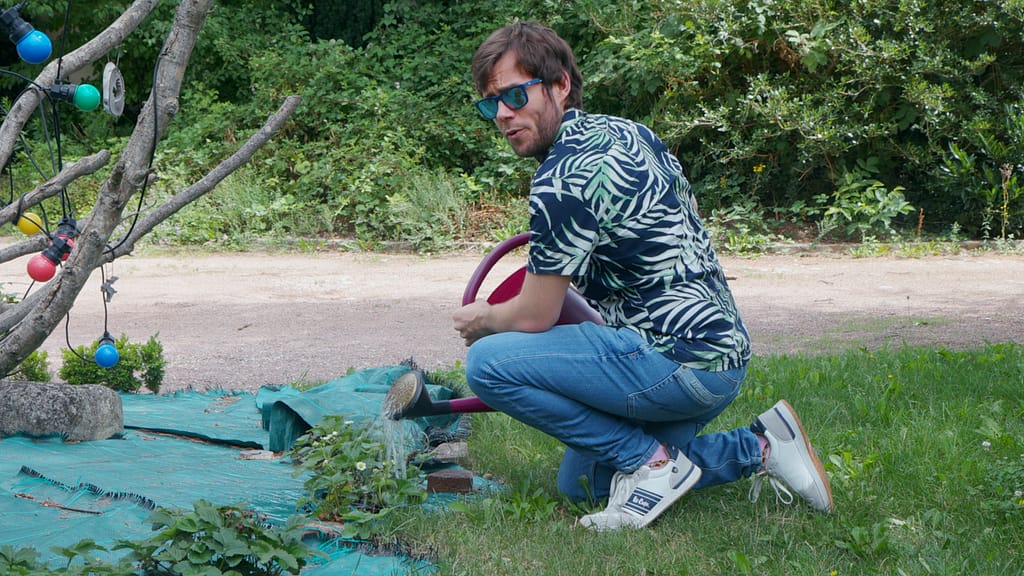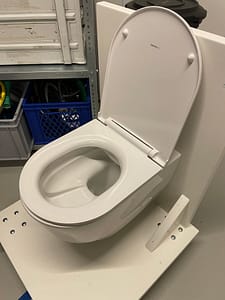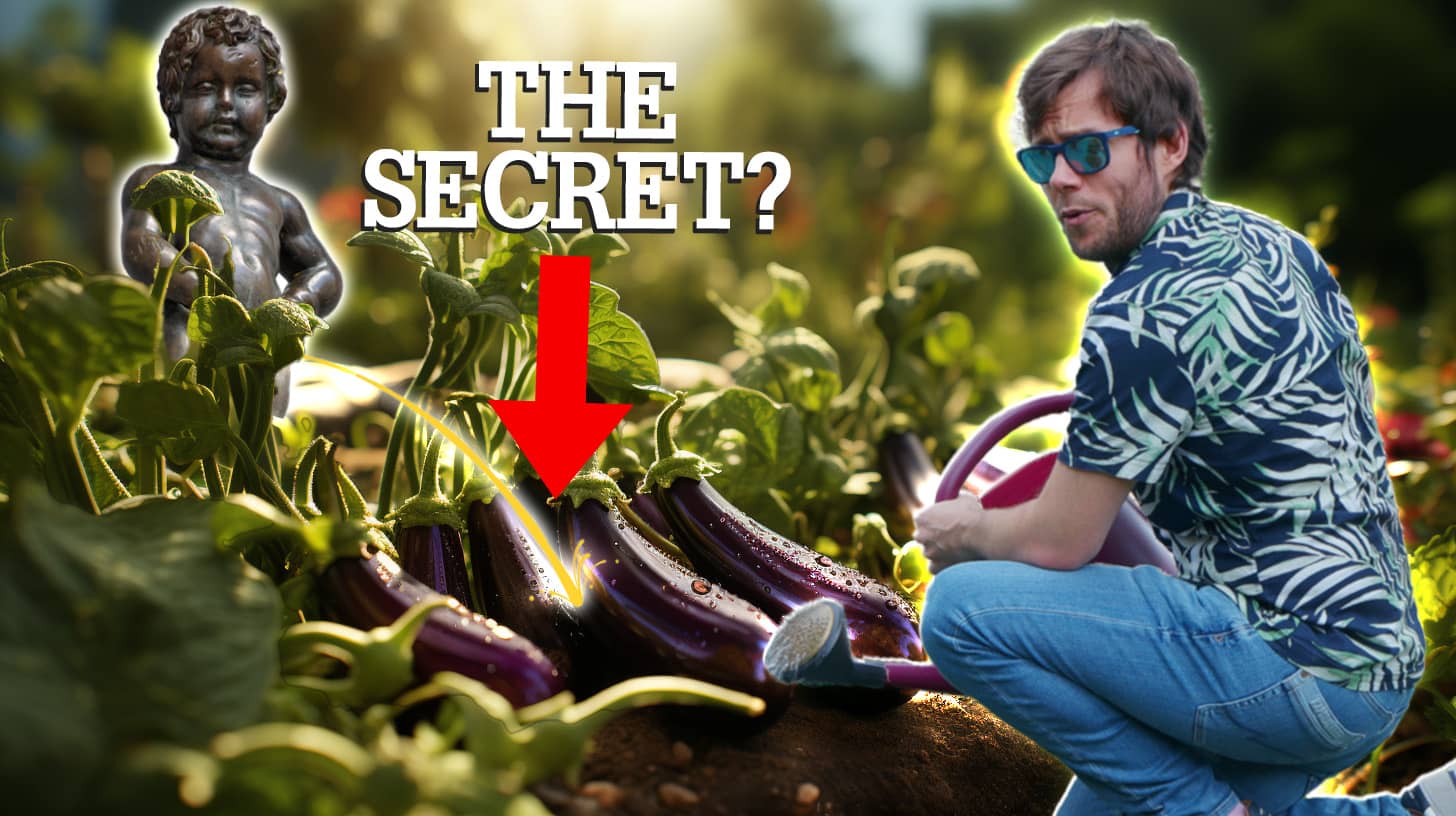What’s my secret for growing the greenest of all gardens? Aurin – aka a urine based fertilizer! (This is by no means sponsored by the Eawag, it’s rather a clever example of resource recovery)
Thanks to its natural source of nitrogen, phosphorus, and potassium, it is the perfect tool for all gardeners!
Why natural? Well, simple: it’s made of human urine.
Podcast: Urine as a Fertilizer
Key Learnings:
Centralized infrastructure was a major staple in humanity’s well-being, yet we might be at crossroads today.
- Human urine is a natural source of nitrogen, phosphorus, and potassium, making it an ideal fertilizer. This method can help replenish the nutrients in soil that are lost over time due to harvesting crops.
- The use of human excrements as fertilizer has a history, but issues with diseases and contamination led to the development of modern sewage systems and wastewater treatment plants.
- Aurin, a product from Vuna (an EAWAG spin-off), is a urine-based fertilizer that is safe and free from pharmaceuticals, hormones, and pathogens thanks to a meticulous treatment process.
- Reusing urine as fertilizer is an example of circular economy and reduces energy consumption. Separating urine from feces at the source (i.e., the toilet) using specially designed toilets can facilitate this process.
Table of contents
Urine as a fertilizer: disgusting?
I’m sure you’re now making the exact same face my wife made when I brought that bottle back home yesterday. Okay, maybe it wasn’t a clever move to show it around during dinner.
Now bear with me until the end of this video to find out the link between Aurin and redesigning your toilets and what they might look like!

Because before that, I need to answer this question:
Why would you want to spread human urine around your garden?
Well, because each time you mow the lawn or harvest the vegetables you grow in your garden, you’re also taking away the nutrients the soil fed to the crop. And over time, that soil will become so poor in nutrients that hardly anything will be able to grow in it – at all.
On the other hand, when we eat those vegetables, these nutrients feed our bodies. We retain a portion of it, but another large fraction gets evacuated through pee and poo.

Okay, urine and feces. Better?
There are many nutrients in Human Urine
Every year, our body produces about 500 liters of urine. 95% of this urine is water, while the other 5% is the summation of various nutrients, like Ammonia (0.05%), Phosphate (0.12%), Magnesium (0.01%), Potassium (0.6%), and of course, Urea (2%), that itself represents a potent source of Ammonium.
Fun fact: that means we all produce about 3 Liters of Potassium per year, which at today’s price level makes for about 40 dollars.

– That’s 39 dollars. Do you pay by cash or card?
– I’d rather pay by urine; here’s the tanker with my 2021 production, a “Grand Cru”!
Fertilizers are feeding the World
Jokes aside, fertilizers represent a 170 billion dollar market, and they’re the ones that allow feeding a constantly growing World Population.
Between 1961 and 2019, nitrogen-based fertilizers have experienced an 800% increase in use in what’s defined today as the Green Revolution of food systems.
If a vast majority of it is produced today through chemical processes – the most famous one being the Haber-Bosch process we covered when we discussed hydrogen use, that has not always been the case.
Human excrements have been used as fertilizers for centuries
Humans have collected feces and urine for centuries and used them as fertilizer in agriculture. It is even the reason why for instance, farmers from the Zürich region refused twice in referendums to adopt a central sewer, as they wanted to preserve their source of human excrements!
Yet, if that was very efficient for fertilizing fields, it also came with a tiny little drawback: it tended to spread diseases and infect potable sources.
Well, at least, that’s what science ended up understanding from the mid-19th century on, resulting in the progressive roll-out of sewers and later wastewater treatment plants.
So back to my Aurin:
Isn’t it archaïc and dangerous to spread human urine-based stuff in my garden?
Well dangerous, certainly not, for a simple reason. Aurin is produced by Vuna, an EAWAG spin-off. If you don’t know EAWAG, it’s Switzerland’s largest water institute, with about 500 researchers working on all things water. So not exactly what I would call a dangerous punk!
To produce Aurin, they undergo a simple treatment train, with a biological nitrification, followed by an activated carbon filtration and a distillation. So the finished product contains less water and is guaranteed to be free from pharmaceuticals, hormones, and any kind of pathogens.
Now to the second part of the question:
Is it archaïc to return to the direct use of treated urine as fertilizer?
Well, I’d rather say that it’s forward-looking. When you let urine go down a sewer, it gets diluted in water and mixed with many other stuff. Oftentimes, it needs to be pumped up before reaching a wastewater treatment plant where it gets treated, which involves some energy again.
So reusing that natural fluid much closer to where it’s produced in a safe manner is an excellent example of circular economy done right!
Which makes me a kind of environmental superhero while I feed my strawberries.

But wait, so far, we’ve talked of urine. Now, if you want to collect that human fluid, it rarely comes alone – so:
What do we do with the feces?
Let me state the obvious: urine is liquid, and feces are solid. And while urine treatment is quite a traditional wastewater treatment topic, feces management has much more to do with the sludge lines you find in those plants.
In terms of raw content, you find more proteins and fats inside – which can be treatment inhibitors. And the biomass is quite different from the urine side. Long story short, it’s an entirely different treatment train you’d have to build for these feces.
Given their carbon content, it might be more clever to valorize them as fuel or turn them into biogas anyways, so it’s also a different output.
So, if we want to roll out our liquid fertilizer production, we’ll have to think of a way to separate urine from feces. Don’t worry, here as well, Vuna had a clever idea as to how to redesign your toilets!
Let’s redesign the toilets!

When you first look at them, it’s hard to tell whether these toilets are any different from any other ones. But when you look closer, you’ll notice this additional hole.
In fact, it leverages the toilet ceramic’s surface tension to let urine get trapped into this extra hole, while feces follow the usual way to the bottom. As the flush sends water at a higher flow rate than urine, it wins over the surface tension; water goes to the bottom and flushes solids away.
So, in a nutshell, again, these toilets separate urine on one stream and feces and water on the other.
Installing a recycled urine fertilizer line at home: realistic?
To start your circular economy journey, you just have to lay down a second sewer pipe to collect that urine and send it to your fertilizer production. Meanwhile, feces follow the traditional stream towards the sewer and, ultimately, the wastewater treatment plant.
And what if you don’t want to revamp your toilets at home and add a complete wastewater treatment train in your basement? You can still simply buy Aurin directly from the EAWAG’s welcome desk, from their swiss resellers, or directly from their webshop.
Again, I have absolutely no stakes in that game; I just thought that’s too cool of a story not to share with you!
If you’re interested in the hidden gems contained in Wastewater, you may want to understand how the Wastewater we generate in the world could produce the equivalent of 320 nuclear power reactors. See you there!


1 thought on “Urine for a Surprise: is Toilet Waste the Future of Farming?”